Of the late September offering of auctions of private collections, two sales stand out. One presents an exceptional group of museum-quality works of art; the other, exhibits from a former museum.
‘Devotion in Stone: Gandharan Masterpieces from a Private Japanese Collection’, at Christie’s New York on 23 September, offers the first tranche of a selection that includes some of the most celebrated of all Buddhist sculptures from the ancient region of Gandhara, which spans parts of present-day Pakistan and Afghanistan. A second sale is scheduled for March 2021. According to the auction house’s specialist Tristan Bruck, the group, which was assembled by an adviser and sold in 1990, is ‘probably the most important ever to come to the market’.
Gandharan art represents the first flowering of anthropomorphic Buddhist art. As a result of its strategic location along the Silk Route, the region’s distinctive relief and free-standing temple sculpture emerged as a compelling fusion of the Greco-Roman and South Asian traditions after the conquest of Alexander the Great in 327 BCE. While the narrative relief panels illustrating the life of the Buddha, along with capitals, decorative panels, heads and footprints of the Buddha, form the majority of this first 28-lot offering (estimates from $3,000), it is the larger-scale sculpture group and free-standing figures that steal the show.
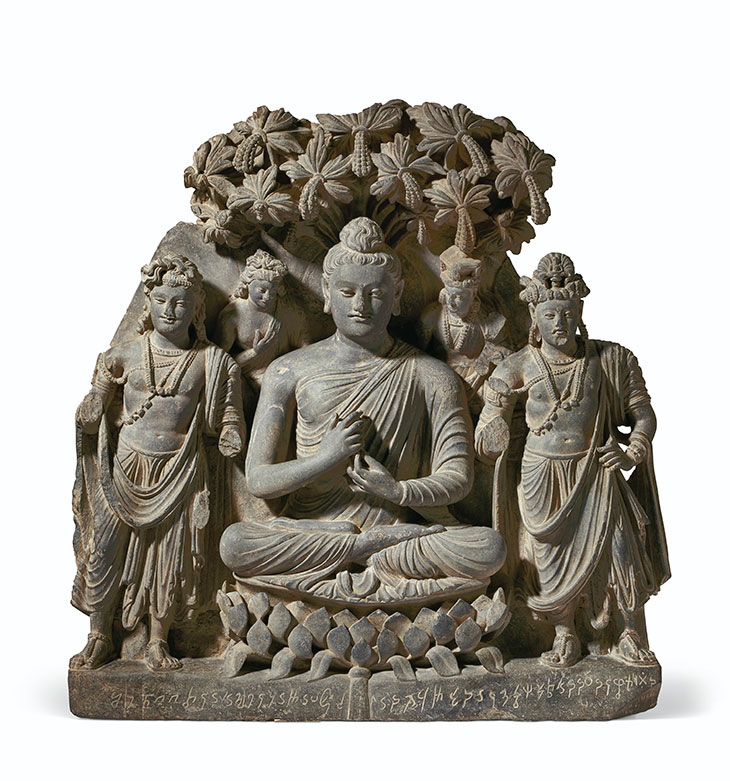
Grey schist relief triad of Buddha Shakyamuni with bodhisattvas (c. 3rd/4th century), Gandhara. Christie’s New York ($600,000–$800,000)
Perhaps the best known and most extensively published work of all Gandharan art is the so-called Brussels Buddha, a triad of the Buddha Shakyamuni and his flanking bodhisattvas, and one of very few figural works from Gandhara with dated inscriptions. According to the inscription, the sculpture was created ‘in the year 5, on the fifth day of the month of Phalguna’; it is now thought to date to the 3rd or 4th century. Here the grey schist is so deeply carved that the Buddha, his retinue and the laden bough of a celestial bodhi tree appear almost in the round (estimate $600,000–$800,000).
More intricately detailed is the near life-size bodhisattva in the costume of an Indian prince. Of around the same date as the sculptural group, this imposing figure conveys the semi-divine state of this enlightened being, who has delayed nirvana in order to help other earth-bound beings on their own paths to enlightenment ($1.5m–$2.5m). Of greater naturalism, however, is the refined and sensitively carved bust of another youthful bodhisattva, his expression pensive as he casts his eyes down towards his devotees ($400,000-600,000). The lower body of the statue is missing, but from the proportions of the torso it is clear this bodhisattva would have once loomed larger than life. The serious drawback here is that only the Brussels Buddha has a provenance outside its country of origin earlier than the mid 1980s, which would preclude most museums from acquiring the rest of these sculptures. Even so, $3.3m-$5.1m is expected.
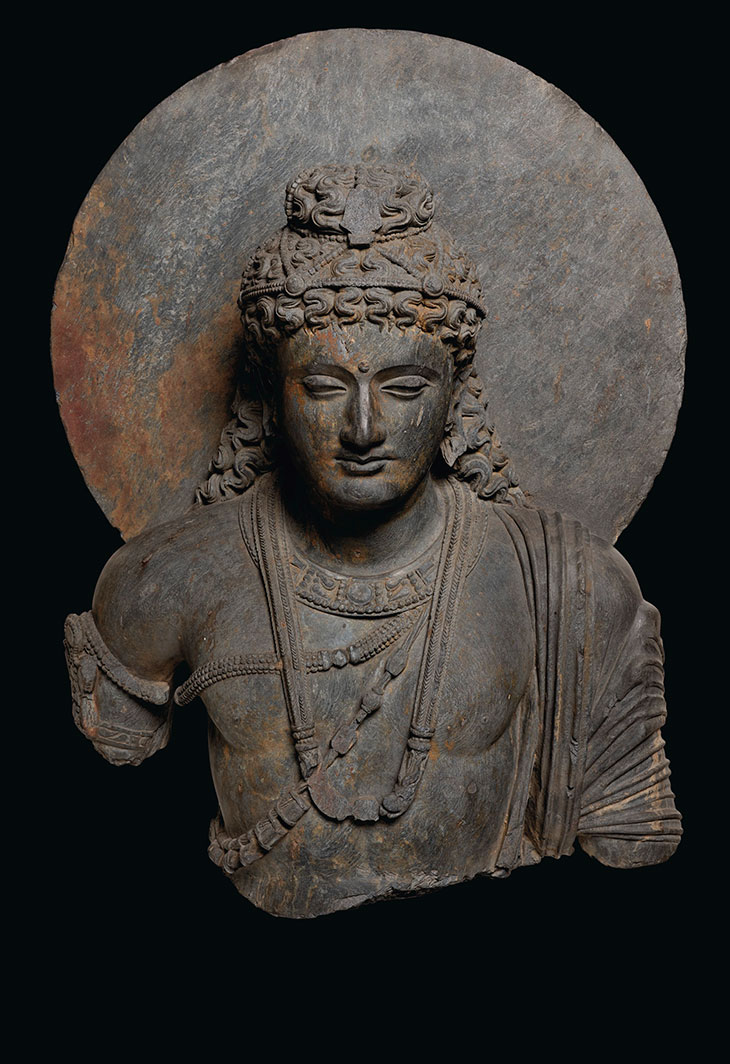
Gray schist bust of a bodhisattva (c. 3rd/4th century), Gandhara. Christie’s New York ($400,000–$600,000)
Museums are not always the prospective buyers at auction. In May the German collector Thomas Olbricht – who is also a chemist and professor of medicine – made a surprise announcement: he was closing his decade-old private museum in Berlin. Now, some 500 of its former exhibits, representing perhaps a quarter of the collection, go under the hammer at VAN HAM Art Auctions in Cologne on 26 September.
What most distinguished Olbricht’s museum, named the me Collectors Room, from other collections of modern and contemporary art and design was its permanently displayed ‘cabinet of curiosities’. Like a princely Wunderkammer of the past, its contents spanned the categories of art (artificilia), material from the natural world (naturalia), scientific instruments (scientifica), foreign artefacts (exotica), and objects of wonder (mirabilia). The suggestive assemblage illustrated here includes everything from taxidermy specimens – the white peacock (€800–€1,200) – to ammonites, plant anatomy models and a gogotte formation (€3,200–€4,000). (Those who have consult the online catalogue will see that numerous lots have been withdrawn: this is in accordance with laws protecting certain animal species. Note also that other lots, including those containing ivory and coral, bear notifications declaring that they may not be exported.)
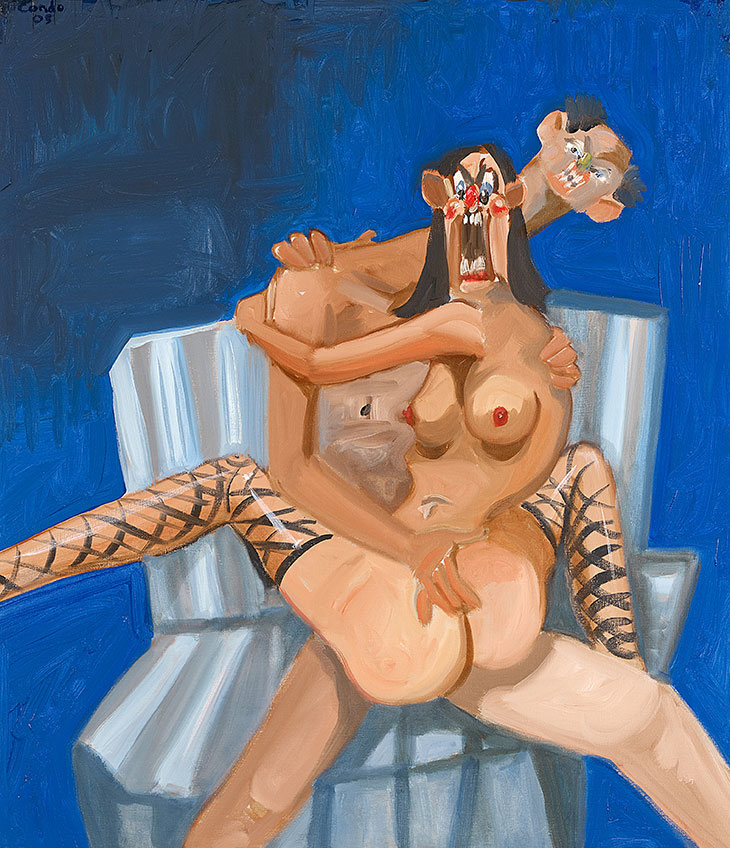
Screaming Couple (2005), George Condo. VAN HAM Art Auctions (€300,000–€500,000)
Inevitably, perhaps, the most valuable lots are of modern and contemporary art. These include Ernst Ludwig Kirchner’s pastel line drawing Zwei weibliche Akte (‘Two Female Nudes’) of 1908 (€60,000–€80,000); Untitled (target), a unique neon installation from 2001 by John M. Armleder (€80,000–€120,000); and a characteristically grotesque oil on canvas from 2005 by George Condo, titled Screaming Couple (€300,000–€500,000). Appropriately category-defying is one of Charles Matton’s exquisitely detailed miniature room constructions, his Babel Library Homage to Borges II of 2006 (€15,000–€20,000). In total, ‘From a Universal Collector – the Olbricht Collection’ is expected to realise €2–€3 million.
‘Devotion in Stone: Gandharan Masterpieces from a Private Japanese Collection’ at Christie’s New York is on 23 September. ‘From a Universal Collector – The Olbricht Collection’ is at VAN HAM Art Auctions, Cologne, on 26 September.
Unlimited access from just $16 every 3 months
Subscribe to get unlimited and exclusive access to the top art stories, interviews and exhibition reviews.

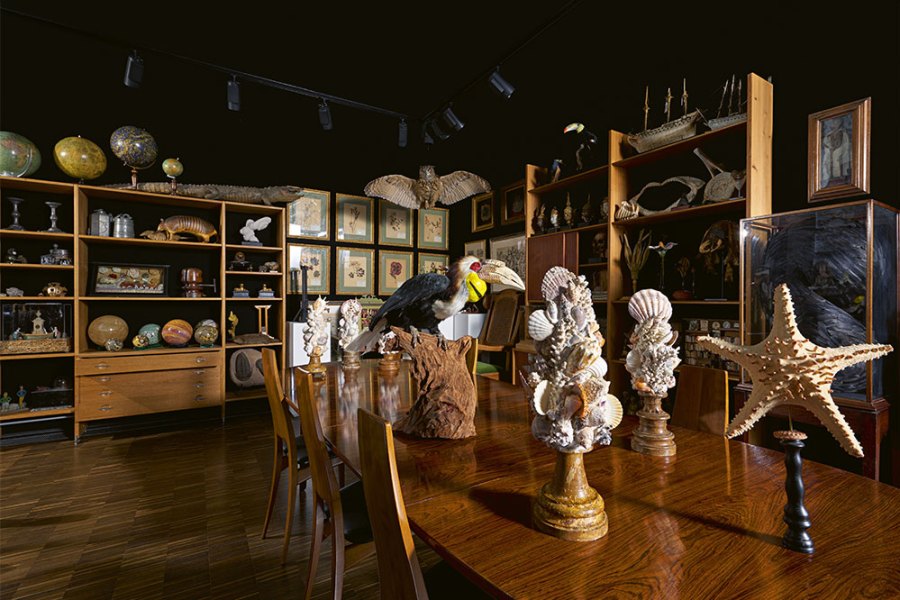
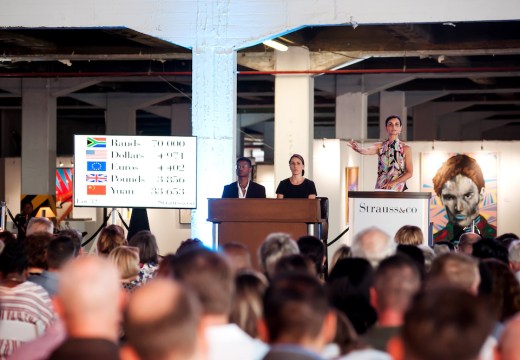
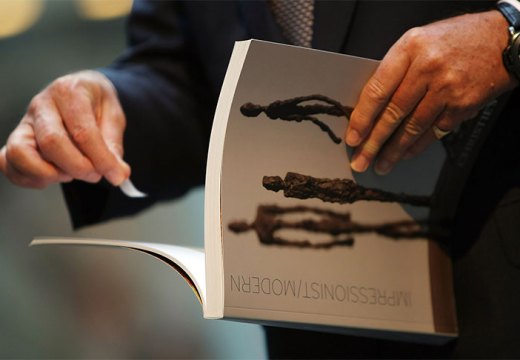
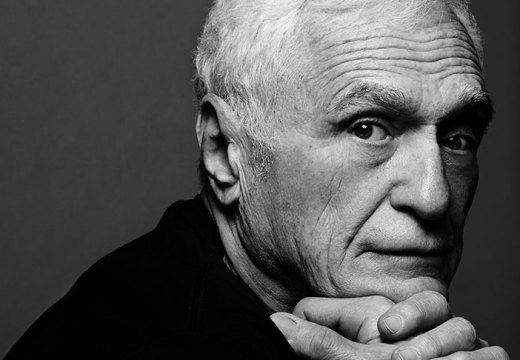









![Masterpiece [Re]discovery 2022. Photo: Ben Fisher Photography, courtesy of Masterpiece London](http://www.apollo-magazine.com/wp-content/uploads/2022/07/MPL2022_4263.jpg)
It’s time for the government of London to return to its rightful home